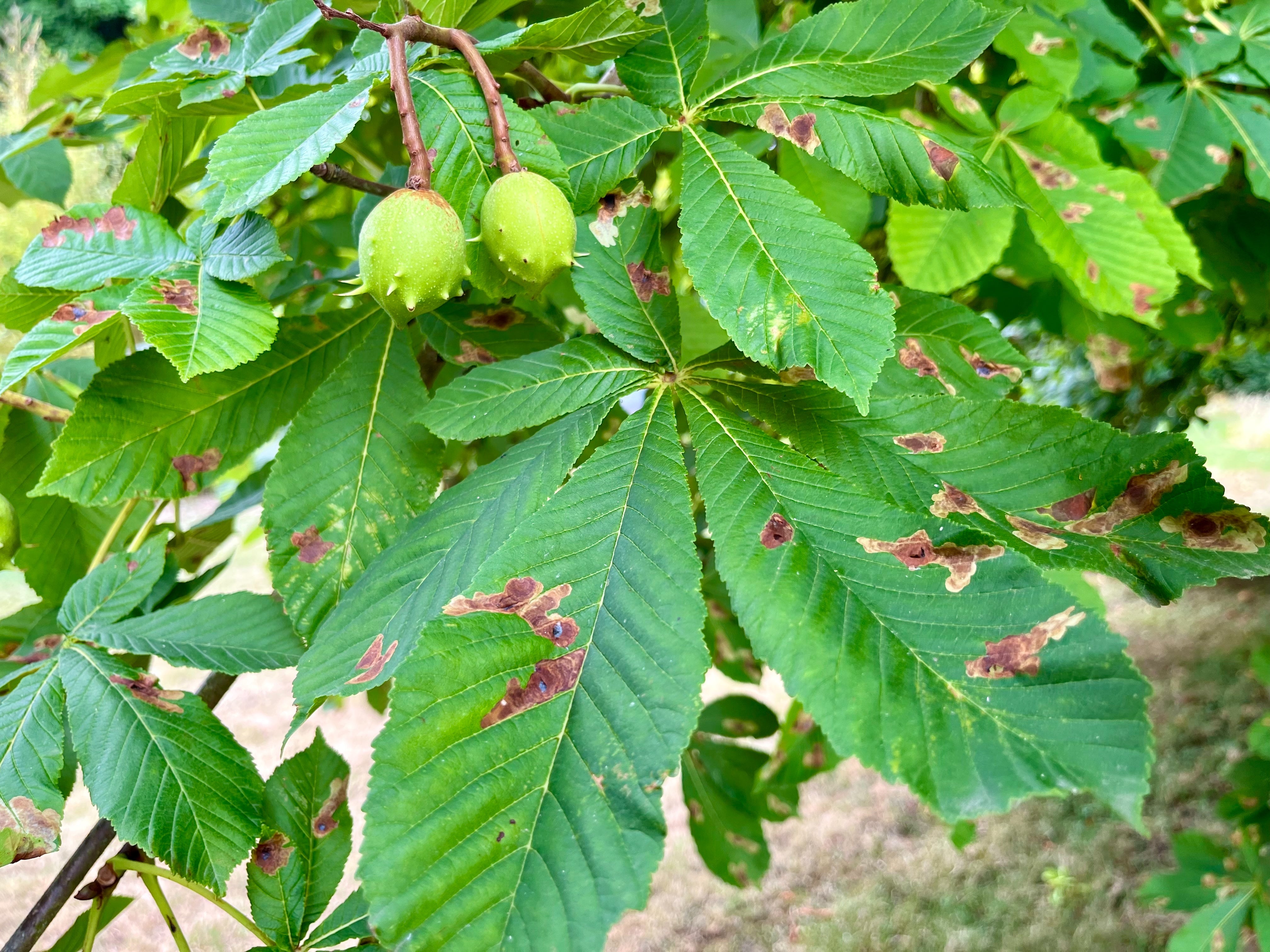Of milk and moths

Almost exactly a year ago we were celebrating the fact that our horse chestnut trees had avoided the attention of the leaf mining moth Cameraria ohridella; in August last year the leaves were virtually clear of any damage and our hopes were high that we’d seen the end of it. First recorded in Wimbledon in 2002, this moth has made steady progress moving across the country at a rate of about 30km a year and is now recorded in most areas, apart from the extreme north. It’s the caterpillar that causes the damage to the leaves, burrowing its way between the upper and lower epidermis.
There are a number of opinions as to why reduced numbers are being recorded in some areas. Weather conditions may have affected the overwintering cocoons that shelter in the fallen leaves. Parasitic wasps may also take their toll, but the most interesting theory is that blue tits and other garden birds have ‘switched on’ to this new food source and started to enjoy the additional protein throughout the autumn and winter months.
Many of us remember the ingenuity of these small, intelligent birds when, in the 1970’s and 80’s, they learnt to peel the foil from our doorstep milk deliveries and help themselves to the top layer of cream. Now with fewer milkmen making their rounds and with predominantly plastic bottles, this skill seems to have been lost but the birds' appetite for these moths may just benefit our parks and gardens in an unexpected way.
Or so we hoped. Upon inspection this year's leaves are once again showing signs of infestation. Not as bad as some trees we have spotted in other areas where the leaves are almost entirely brown and desiccated, but in contrast to last year it seems like additional biological controls will be needed if the health of our trees is to ever improve.











